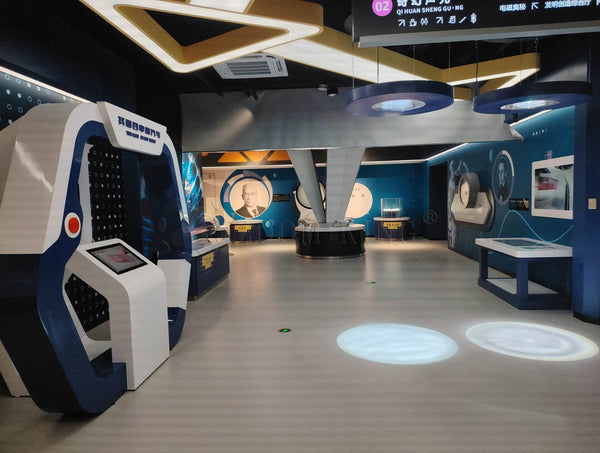Learning Through Play: Combining Science and Interactive Design to Inspire Young Minds

Introduction
In the world of education, learning through play has emerged as one of the most effective methods for engaging children and fostering lifelong curiosity. By combining science with interactive and beautifully designed exhibits, children not only learn but enjoy the process, making complex topics fun and approachable. These exhibits, which focus on blending play with education, have become favorites among children, offering a unique approach to learning.
Why Learning Through Play is Crucial for Child Development
The learning through play approach taps into children's natural curiosity and enthusiasm. Here's why this method is so effective:
-
Active Engagement: When children are engaged in playful learning, they absorb information more effectively. Interactive exhibits encourage them to explore scientific concepts firsthand, boosting their cognitive development.
-
Stimulating Curiosity: By presenting science in a fun and accessible way, interactive exhibits encourage kids to ask questions and seek answers, fostering an early interest in science.
-
Developing Critical Thinking Skills: Play-based learning allows children to experiment, make decisions, and solve problems in a safe, supportive environment.
How Science and Play Come Together in Interactive Exhibits
The beauty of interactive exhibits lies in their ability to seamlessly blend science with play, creating a dynamic learning experience. Here’s how these exhibits foster learning through play:
-
Hands-On Exploration: Children can touch, manipulate, and observe scientific phenomena up close, allowing them to experience the principles of science in action.
-
Creative Learning Spaces: Every exhibit is designed to be visually appealing, drawing children in with colors, shapes, and motion, making science more approachable.
-
Immersive Technology: Exhibits use modern technology like sensors, interactive screens, and augmented reality to create an immersive learning experience that feels like play.
Popular Interactive Exhibits Promoting Learning Through Play
Here are some of the most engaging exhibits that combine play with scientific education, encouraging children to learn through exploration:
-
The “Energy Flow Circuit”: In this exhibit, children create their own electric circuits, learning the basics of energy transfer while playing with different combinations of components.
-
The “Sound Wave Generator”: Kids can experiment with sound waves, discovering how different frequencies and amplitudes affect pitch and volume through interactive controls and visual displays.
-
The “Gravity Well”: This exhibit teaches children about gravity by allowing them to roll different objects down a slope and observe how mass and speed are connected.
The Impact of Learning Through Play
The benefits of learning through play extend far beyond the exhibit floor. This method nurtures lifelong skills and fosters a deep love for learning. Here’s the long-term impact on children:
-
Improved Retention: By engaging with material through play, children are more likely to remember scientific concepts and ideas.
-
Encourages Lifelong Curiosity: Playful learning environments spark curiosity and a desire to learn, laying the foundation for future educational success.
-
Enhanced Social and Emotional Skills: In group exhibits, children learn collaboration, communication, and teamwork, essential skills for their personal development.
Why Children Love Learning Through Play
Children are naturally drawn to play, and when learning is disguised as fun, they are more likely to engage with the material. Here’s why kids love learning through play:
-
Active Involvement: Rather than passively receiving information, kids are encouraged to actively participate in the learning process.
-
Freedom to Explore: Children can explore at their own pace, experiment with different ideas, and feel empowered to control their learning journey.
-
Sense of Achievement: When children solve problems or complete tasks within the exhibit, they gain a sense of accomplishment, reinforcing positive feelings towards learning.
Conclusion
By combining science with creative, interactive exhibits, learning through play offers children an enriching and enjoyable way to engage with complex topics. These carefully designed exhibits, which blend aesthetics and education, captivate young learners and inspire a lifelong love of science. As more educational centers embrace this approach, children will continue to thrive in environments that nurture both their curiosity and their ability to learn through play.
